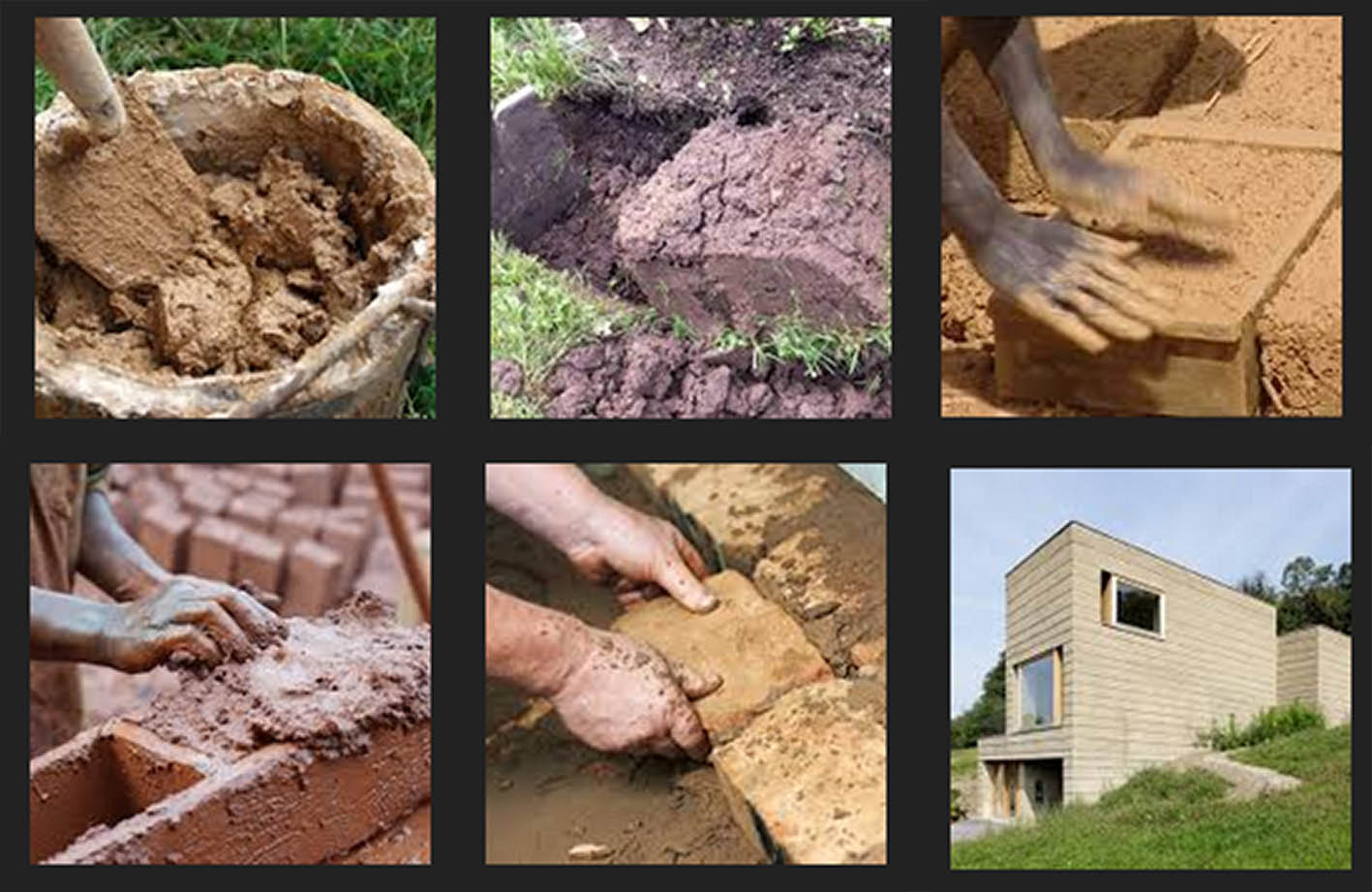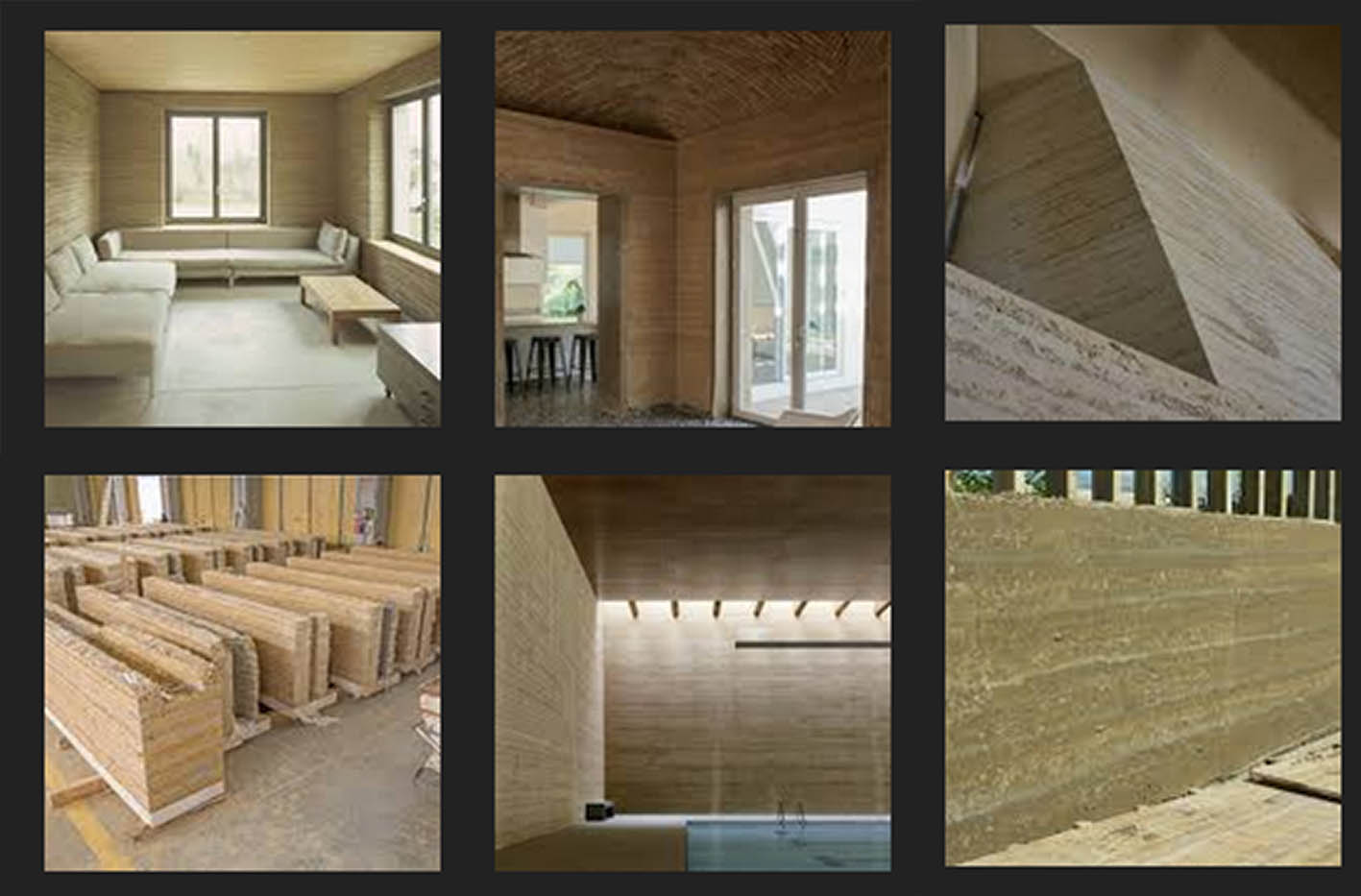Wörterbuch (en): Loam construction / Clay building
Clay for building was originally extracted from local excavation pits and used for massive walls, half-timbered trusses, as intermediate ceiling fill or wall and ceiling plaster. For the infill, the material was often mixed with chopped straw and applied to wickerwork or wooden sticks. Clay was free of charge, easy to process and reusable. It was not until industrialisation that it was replaced by industrially produced building materials such as cement and gypsum. A natural building material consisting of clay, gravel, sand and silt, which can be processed with little energy, regains its importance in the context of sustainable building. Its absence of harmful substances, the development of rational process technologies and novel clay building materials also contribute to this. In rammed earth construction, an earth-moist loam mixture is placed in a formwork and compacted. Clay must be protected from rain and frost - its use indoors is recommended. In outdoor areas, permanent protection through constructive measures is indispensable. Long-term moisture reduces the strength of the building material and leads to weathering. Wood and other organic materials surrounded by clay are dried out. With proper processing, composition and mixing, clay buildings can have a life span of centuries.

